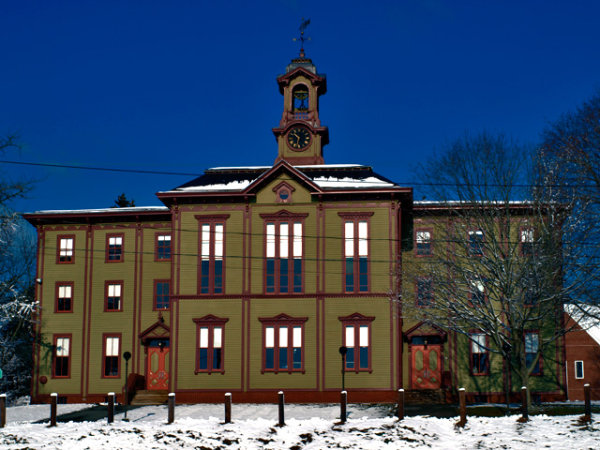
Woodstock, CT has always held a certain pride in the education of its children from colonial days to the present. Higher education beyond the basics of readin', writin' and 'rithmetic wasn't a staple of affluent farming communities during those times and Woodstock was somewhat unique in supplying the opportunity to colonial children. The "high" professions of religion, medicine and politics required a larger perspective on the world and the citizens of Woodstock provided that opportunity - mostly under the instruction of various religious and university educated leaders of the community.
As the town expanded and became more populous, the need for an organized "high" school became apparent. On January 12th, 1801 the town leadership "granted provision to build an academy on the North side of Town Common" and $100 was collected from 32 leaders of the community to build the facility.
Farmers from around the area supplied the appropriate amount of white oak and the raising was quite the social event. On Feburary 2nd, 1802, the building was opened for operation under the guidance of Preceptor Thomas Williams of Pomfret, CT.
Over the years, Woodstock Academy has both prospered and fallen on hard times. In the downturn of 1860, the original building was razed, basic post/beam construction saved and this building was it's replacement. Henry Bowen (remember him - Pink House?) donated $5,000 of the $20,000 raised and the rest is, as they say, history. Yale University had an interest in the operating of Woodstock Academy for many years (up until WWII) and supplied many of its original Preceptors and Instructors.
Woodstock Academy, while considered by the state as a public high school, is actually a private non-profit institution governed by a Board of Directors and operates outside the governance of the Woodstock Board of Education. It is considered a "free academy" - the only other similar institution in the US is also located in Connecticut, the Norwich Free Academy in Norwich, CT.


